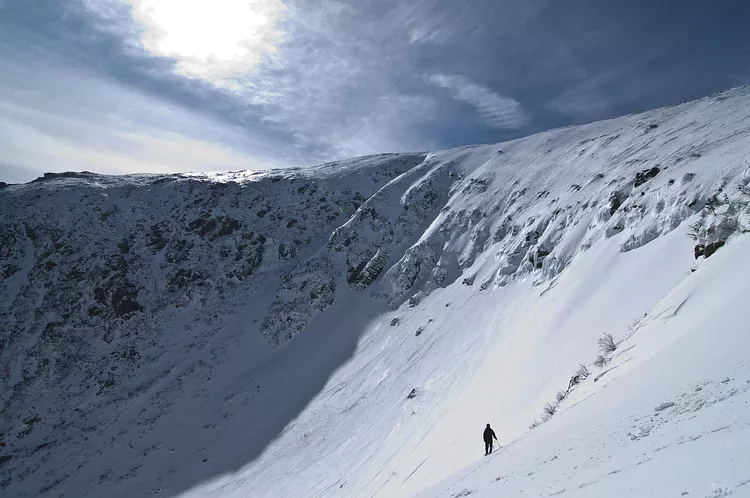Tuckerman Ravine Overview
A so-called glacial cirque on the southeast face of Mount Washington in New Hampshire, Tuckerman Ravine provides a unique spring skiing and snowboarding opportunity. It’s open year-round to hikers, skiers, and other outdoor enthusiasts; however, there’s a significant risk of avalanche during prime skiing months, making Tuckerman Ravine unsuitable for novice skiers in the middle of winter. Therefore, beginners are encouraged to wait for spring when conditions become more stable.
This area exemplifies extreme skiing in the eastern U.S., and if you’re ready for an adventure, Tuckerman Ravine and Mount Washington will indeed provide a memorable experience.
Ski Racing on Tuckerman
Back in the 1930s, ski races were common on Tuckerman, but none are more legendary than the American Inferno, a 4.2-mile race from summit to base. In 1939, a skier named Toni Matt accidentally took a wrong turn, skiing straight down Tuckerman’s headwall. He covered more than 4,000 vertical feet in six and a half minutes, easily clinching the victory.
This incident sparked a passion for skiing this massive wall, leading many skiers in the eastern U.S. to undertake the challenge, flocking to its slopes between April and July each year.
Tuckerman Ravine Perfect for Spring
Tuckerman Ravine is a vast open bowl located on the east slope of Mount Washington, the highest mountain in the Northeast. Every spring, expert and extreme skiers and snowboarders make a pilgrimage here. The journey begins in hiking shoes, as you trek up the 3.1-mile well-worn trail to the base of the ravine. Upon arrival, skiers and snowboarders equip their gear and begin climbing up the steep slope towards the rim. While it’s a demanding workout, the rewards are more than worth the effort.
Basic first-aid kits are available near the rocks by the Mount Washington Volunteer Ski Patrol; nonetheless, it’s best to avoid needing them.
Prepare for Mount Washington Weather
The weather on Mount Washington is notoriously unpredictable, changing in an instant. Additionally, the threat of avalanches looms large. Mount Washington is known for having some of the most extreme weather conditions, previously holding the record for the strongest wind gust recorded on Earth. On April 12, 1934, wind speeds at the summit reached an incredible 231 miles per hour, a record that stood until 2010.
Considering these challenging conditions, novice climbers or skiers should either build their experience before attempting Tuckerman or team up with an experienced guide, adhering strictly to their instructions.
Choose Your Route
Tuckerman offers various descent routes for skiers. The Left Gully is one of the easier paths and may still provide a suitable challenge for newcomers. It’s important to remember that conditions become steeper and more challenging as you move right, with both Center Gully and The Icefall offering angles of 55 degrees or more. The Chute serves as another expert-only run, passing between two large cliffs.
On the far right, skiers will find Right Gully, leading to an easier descent; however, less experienced skiers are advised to remain closer to the edges for safety.
How to Prepare for Tuckerman Ravine
Tuckerman Ravine offers an extreme skiing and riding experience; therefore, it’s crucial to understand the risks before tackling this feat. Injuries can occur, and available help is often limited or nonexistent.
If you plan to ski or ride in Tuckerman Ravine, start by visiting the Mount Washington Avalanche Center website. There, you’ll find weather updates, snow reports, weekend alerts, photos, trip planning suggestions, and avalanche data. All relevant warnings will be posted on that site as well.
Another valuable resource for those skiing Tuckerman is the Time for Tuckerman Community Forum. Additionally, visiting the U.S. Forest Service office in the White Mountains National Forest is advisable, given that Mount Washington resides in this area.
Climbing Mount Washington and skiing Tuckerman Ravine is cost-free (though it might take a toll on your body). For those wanting to stay overnight nearby, the Appalachian Mountain Club operates the Hermit Lake Shelters and provides options at the Joe Dodge Lodge.




